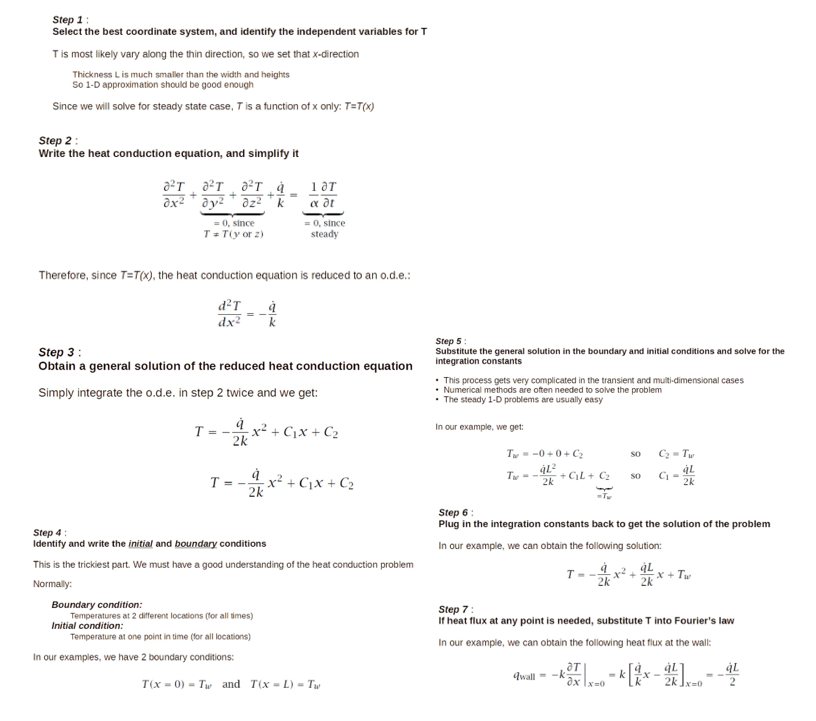Answered step by step
Verified Expert Solution
Question
1 Approved Answer
please use phyton program. Use numerical methods to find the temperature distribution inside the concrete slab in the following simple 1 D heat transfer problem
please use phyton program. Use numerical methods to find the temperature distribution inside
the concrete slab in the following simple D heat transfer problem
and compare with the analytical solution. Analytical solution steps are below.
A large, thin concrete slab of thickness is "setting." Setting is an
exothermic process that releases heat volumetrically, The
outside surfaces are kept at the ambient temperature, so Since we will solve for steady state case, is a function of only:
Step :
Write the heat conduction equation, and simplify it
ubraceubraceubraceubrace
Therefore, since the heat conduction equation is reduced to an ode:
Step :
Obtain a general solution of the reduced heat conduction equation
Simply integrate the ode in step twice and we get:
Step :
Identify and write the initial and boundary conditions
This is the trickiest part. We must have a good understanding of the heat conduction problem
Normally:
Boundary condition:
Temperatures at different locations for all imes
Initial condition:
Temperature at one point in time for all locations
In our examples, we have boundary conditions:
and
Step :
Substitute the general solution in the boundary and initial conditions and solve for the
integration constants
This process gets very complicated in the transient and mutidimensional cases
Numerical methods are often needed to solve the problem
The steady D problems are usually easy
In our example, we get:
ubraceubrace
Step :
Plug in the integration constants back to get the solution of the problem
In our example, we can obtain the following solution:
Step :
If heat flux at any point is needed, substitute into Fourier's law
In our example, we can obtain the following heat flux at the wall:
pppppp

Step by Step Solution
There are 3 Steps involved in it
Step: 1

Get Instant Access to Expert-Tailored Solutions
See step-by-step solutions with expert insights and AI powered tools for academic success
Step: 2

Step: 3

Ace Your Homework with AI
Get the answers you need in no time with our AI-driven, step-by-step assistance
Get Started


